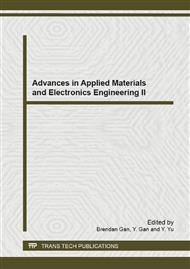p.481
p.486
p.491
p.495
p.501
p.505
p.509
p.513
p.518
Efficient Beacon Collision Detection/Avoidance Mechanism in WLAN-Based Mesh Networks
Abstract:
Every node in wireless multi-hop mesh networks periodically transmits its own beacon and then monitors the existence or activity of other nodes by checking their beacons. So, the loss of beacon message in wireless multi-hop mesh networks causes the inefficient network overhead. This paper proposed a dynamic beacon collision detection and avoidance (BCDA) mechanism that can actively adapt to beacon collision status due to node movement. Each node checks the collision status by comparing the received beacon timing information from neighboring nodes with that of its own. It is shown from the performance evaluations that the proposed BCDA mechanism provides the decrease of beacon collision ratio and the throughput enhancement.
Info:
Periodical:
Pages:
501-504
Citation:
Online since:
April 2013
Authors:
Keywords:
Price:
Сopyright:
© 2013 Trans Tech Publications Ltd. All Rights Reserved
Share:
Citation:


